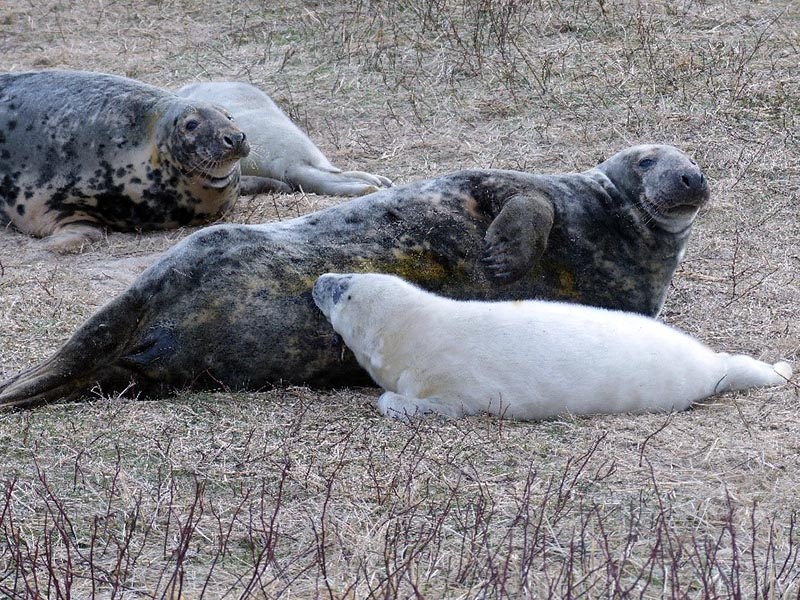Grey seal
Learn about grey seals, including their life cycle, diet, distribution and population trends.
On this page
Life cycle
Grey seals have a lifespan of 30 to 40 years. Males may reach 2.3 metres in length and weigh up to 350 kg. Females can reach up to 2 metres in length and weigh up to 230 kg.
Pups are born from late December to early February in the western Atlantic. They double their weight during their 2 week nursing period and reach about 50 kg at weaning. Within their first month, they shed their white coat and grow dense, waterproof adult fur. They then leave for the sea to learn to fish for themselves.
Diet
The grey seal is a highly mobile species. They forage in waters from Georges Bank to the northern Gulf of St. Lawrence and eat a varied diet that includes:
- lobster
- octopus
- fish such as:
- cod
- skate
- flatfish
- herring
- white hake
- groundfish
- sand lance
Effects on the ecosystem
The influence of grey seals on prey populations varies by ecosystem. In 2010, a science advisory process showed that grey seal predation was significantly impacting cod and other groundfish recovery in the southern Gulf of St. Lawrence.
Distribution
Grey seals are found along the shores of the North Atlantic Ocean. In Canada they are found in:
- Nova Scotia
- New Brunswick
- Prince Edward Island
- Newfoundland and Labrador
- the Gulf of St. Lawrence off the shores of Quebec
Grey seals in the Northwest Atlantic form a single population, but are separated into 3 herds for management purposes. The herds are based on their breeding sites:
- Sable Island
- coastal Nova Scotia
- the Gulf of St. Lawrence
There are now fewer pups born on the ice in the Gulf of St. Lawrence, due to a decline in winter ice cover. Seals have responded by pupping on nearby islands, with increased pupping on Sable Island and in southwest Nova Scotia. Sable Island is the largest grey seal breeding site in Canada.
Population trends
By the 1960s, commercial sealing activities severely depleted the grey seal population to the lowest levels ever seen. The population is still in recovery to pre-sealing levels.
We estimate the size of the grey seal population with a model incorporating estimates of:
- pup production
- reproductive rates
- information on removals
The population in the Gulf of St Lawrence has grown slowly. This is due to higher mortality among young seals when breeding on pack ice and a greater number of removals from the population. The population has increased from about 5,000 animals in 1960 to an estimated 44,000 animals in 2017. The Sable Island and coastal Nova Scotia populations have increased more rapidly from approximately 2,300 animals in 1960 to an estimated 380,000 animals in 2017.
The last population assessment estimated Canadian grey seal population is 424,300.
The grey seal was designated ‘Not At Risk’ by the Committee on the Status of Endangered Wildlife in Canada in April 1999.
Related links
- Date modified:
